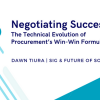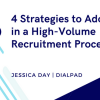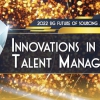Today’s labor market is tight. At the start of 2019, the U.S. economy had seen the longest run of job growth since 1969 and the current unemployment rate is still holding steady at about four percent. Year-over-year wage growth is also the strongest it’s been in a decade. The robust economy has shaped an ideal market for employees, where the demand to fill open positions is outpacing the supply of talent. You’d think employees would look at this as an opportunity to shop their talent to the highest bidder, right? But are workers actually looking to move on?
In an effort to find out more about the economy’s impact on employee mobility, Workforce Logiq surveyed working consumers across the United States for the 2019 Employee Fear and Mobility Index. Surprisingly, the proprietary research found that employees are not currently planning to seek out new opportunities, regardless of the option to pursue better pay or new responsibilities in this highly attractive job market. According to the survey, 72 percent of all workers plan to stay in their current roles for the next year. Unfortunately for procurement, HR teams and hiring managers, the tight labor market may become even tighter.
Employees Fear Economic Downturn
Despite strong economic and employment indicators, today’s headlines are a whiplash of bear vs. bull market sentiments – not to mention a global economic narrative that is driving uncertainty, doubt and fear in the work environment. Our survey results highlight that employees are already behaving as if in recession mode, hunkering down to prepare for stagnant wages and fewer promotions and raises. In fact, 57 percent of all workers believe the economy is going to get worse in the next 12 to 24 months. Of these respondents, 45 percent expect wage stagnation to be the main outcome of an economic downturn.
The Workforce Logiq study found that the top motivator for workers staying in their current role was job security, followed by concerns that they would receive lower compensation elsewhere. While this might seem surprising given the strength of the labor market, the fear of last in/first out during an economic downturn had an impact on the perception of their actual long-term compensation with a potential job move.
Another interesting discovery – respondents noted that finding the time or resources to look for a new job was not an issue (aggregate rank score of 2.56 out of 10). This suggests that while employees have the means to find new opportunities, they are intentionally holding on to their current roles. In fact, 79 percent of total survey respondents said they had not changed jobs within the past 12 months. Why? Fear, uncertainty and doubt.
Overcoming Employee Uncertainty to Win Talent
Fear of change is a big hurdle for procurement and HR teams to overcome when trying to win talent in today’s recruiting environment. Conveying confidence in business performance and communicating long term financial and job security are all important recruiting brand messages with which to find, engage, convince and ultimately win the right candidates.
Organizations must reinforce this message of confidence even before they begin hiring for specific roles. Engaging with their talent communities– or pipeline of pre-qualified and engaged prospective candidates – means their recruiting targets can interact with their brand and understand the organization’s culture and expectations in advance of the screening process. That leads to higher engagement of the right candidates more likely to take an offer – and stay.
In addition, procurement and HR teams should also take advantage of the advances in workforce management technologies and artificial intelligence (AI), which have the potential to give enterprises a recruiting edge by streamlining processes, increasing visibility and providing organizations with the insights they need to make the right hiring choices—quickly. For example, AI-enabled solutions can efficiently short-list candidates by matching CV content with the hard and soft skills of the job requisition, including cultural fit and the likelihood to stick and stay. Then, an HR professional can review the small pool of candidate matches to see who is most likely to meet job expectations, drastically cutting down time-to-hire and new hire attrition.
Making the wrong decision is costly: The Society for Human Resource Management (SHRM) estimates that on average it costs a company six to nine months of an employee’s salary to replace him or her. In today’s tight labor market, it’s more important than ever to find the right candidates who are willing to move and are right for the job. Moving smartly is just as important as moving quickly.
Growing the Contingent Workforce
An additional strategy in an ever-tightening employment market is for procurement and HR teams to leverage a more flexible on-demand capacity – with contingent workers. Our study found that contingent workers see themselves as freelancing more or otherwise making changes to their employment status when compared to full time workers. Overwhelmingly, full-time workers have no plans to change their status – 70 percent versus contingent’s 37 percent. This signals that contingent and gig workers are more open to seeking other opportunities.
While contingent labor positions provide a critical edge for organizations by opening up the talent pool to additional candidates with specialized skill sets, they can also bring higher levels of complexity in sourcing and HR management. However, with procurement’s expertise in supplier management, contract and budgeting—combined with HR’s employment policies, recruiting and performance management know-how—the two departments together can extract the most value out of alternative workforce hiring.
With the future of the job market uncertain and fear impacting employees’ willingness to seek new opportunities, the one thing we know for sure is that organizations will need to develop creative recruiting strategies to attract the best talent. Organizations that implement the right AI-enabled technology, build and nurture a talent pipeline and are open to hiring contingent workers will have a leg up on their competition to fill open positions with high-quality candidates.







